It’s a Small Thing
A spatula held in the vise came from a small, angular, rectangle of thin wood salvaged from some cabinet doors made of elm. The doors I garnered were just scrapped and about to be tossed in a skip at the National Trust’s Penrhyn Castle in North Wales. My workshop, used to be there in the Castle proper.
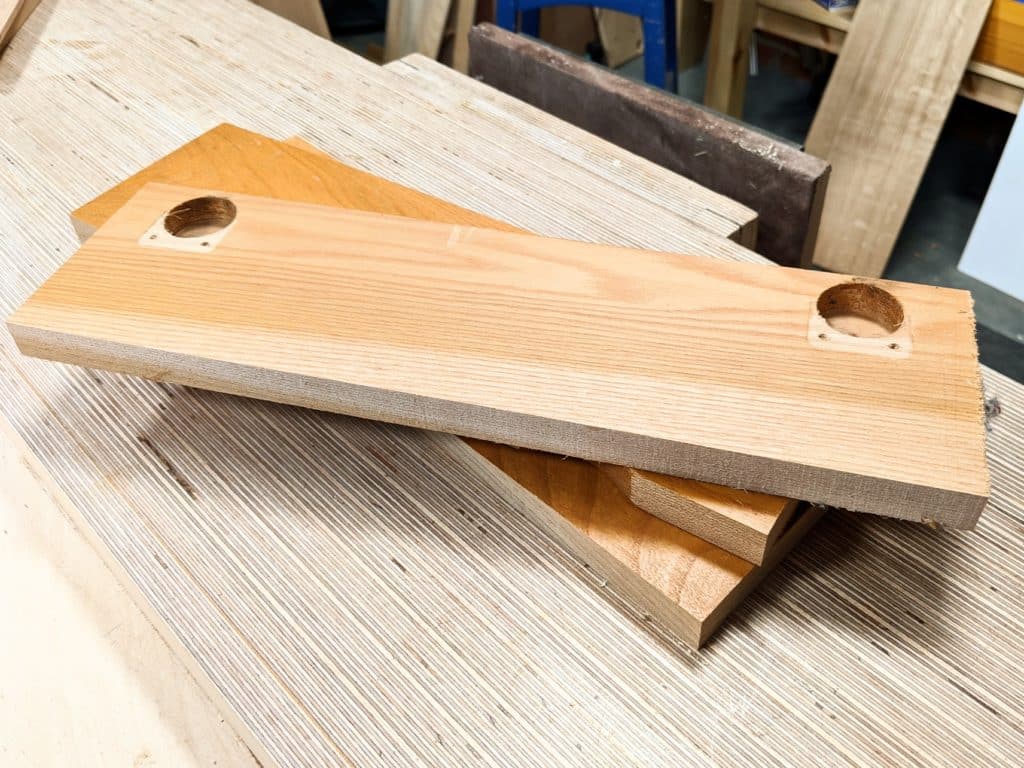
There was really no need to scrap the perfectly good cabinets. Made from quality materials two decades past, the solid wood doors were well made but discarded and replaced by MDF versions. The reason? No one knew that the hinges could be adjusted to realign them in a minute flat simply using a flat-head screwdriver, but that’s another story. Their expensive loss of thousands of pounds to replace them was to be my gain and then too the gain of others.
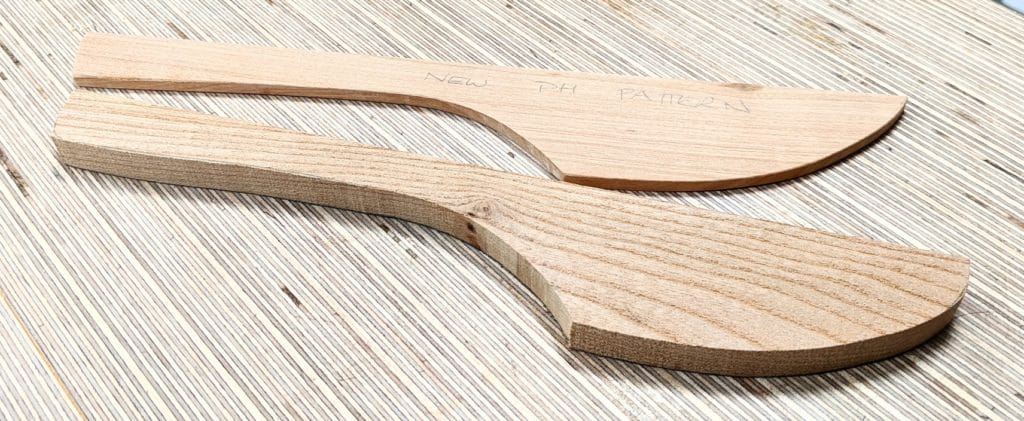
Working with autism
A few months have passed since I took my skills and background in woodworking and teaching to a charity enabling autists by developing a specific course for their woodworking. The quest has taken root as we introduced students and staff to the use of a few specially chosen hand tools. The spokeshaves were the easiest and then planes not quite so. Rasps too were incredibly empowering for shaping and then the brace and bits for hole boring, driving screws etc were exciting to all. The simplicity of this is the reason for my top title. To some this may seem very basic, but as many of you testify from time time, where to start can be very intimidating.
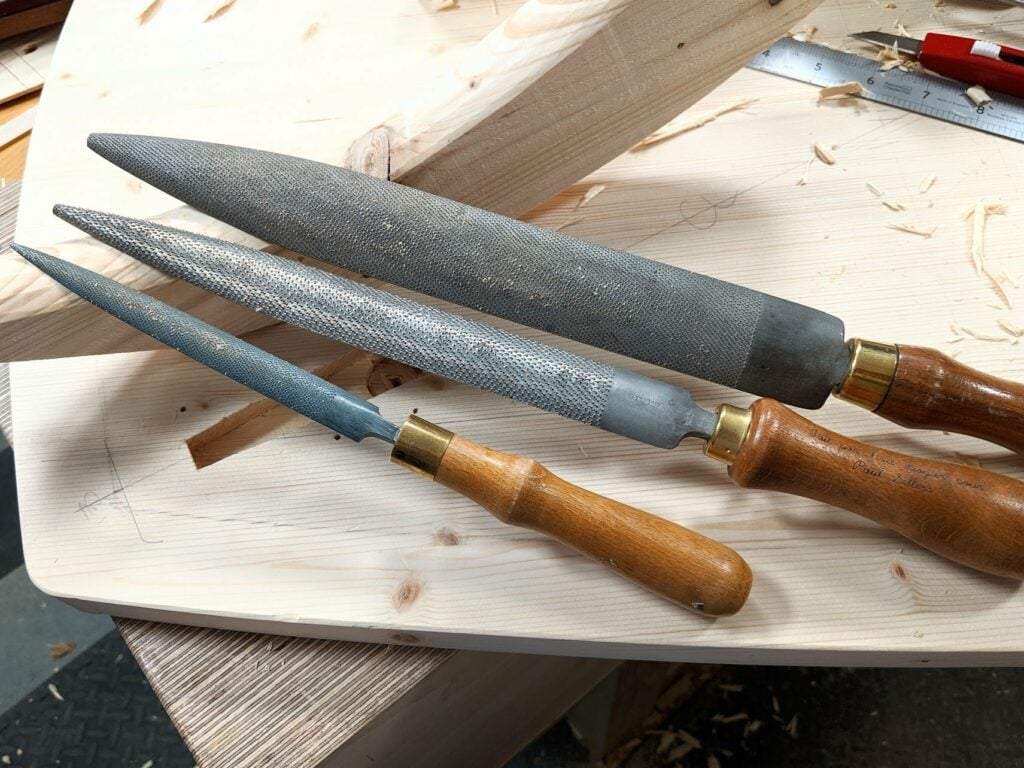
The work has been an amazing few months of new creativity and enabling and to move ever further forward Hannah and I are currently fleshing out our ideas for 2020 with a 2020 vision yet to be revealed. This means aiming for another schedule because it seems we also have a plan for developing new direction for autist woodworkers to thrive on the spectrum. Planning the future begins by introducing those managing their autism
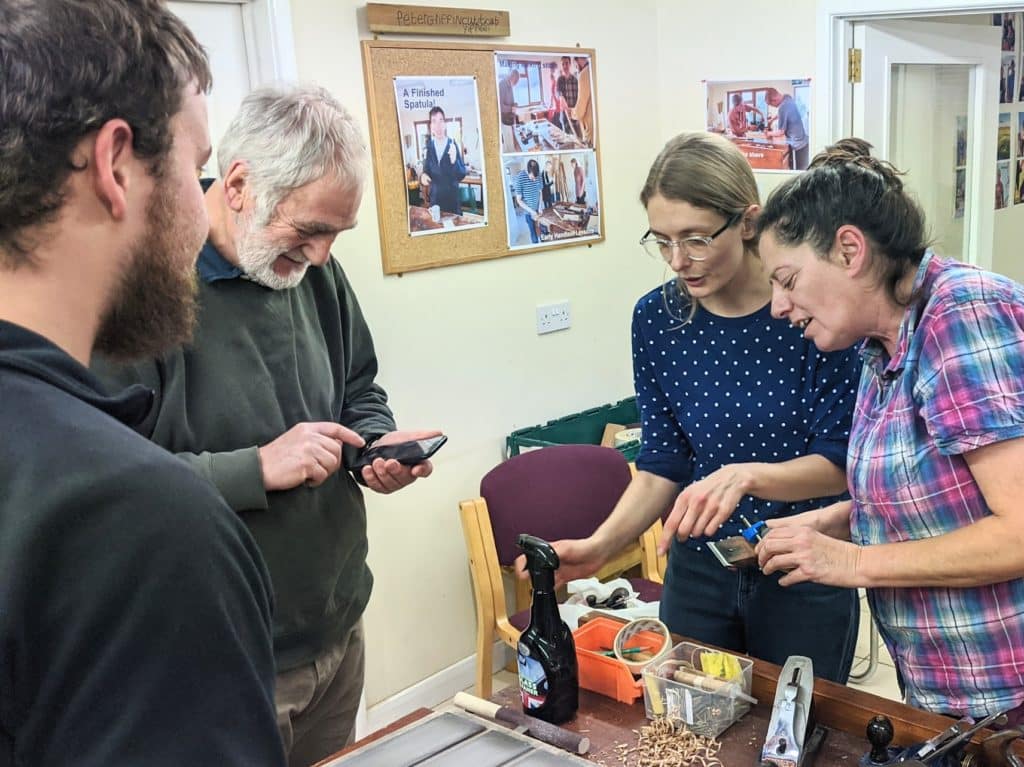
condition (ASC) along with their teachers, trainers and support workers. This support is pivotal. So often in the background to any success story it’s mostly the people behind the scenes that make things happen. This has been an amazing introduction to those working for the autism cause and we have gone progressively from baby steps to strides yet still at a sustainably measured pace.
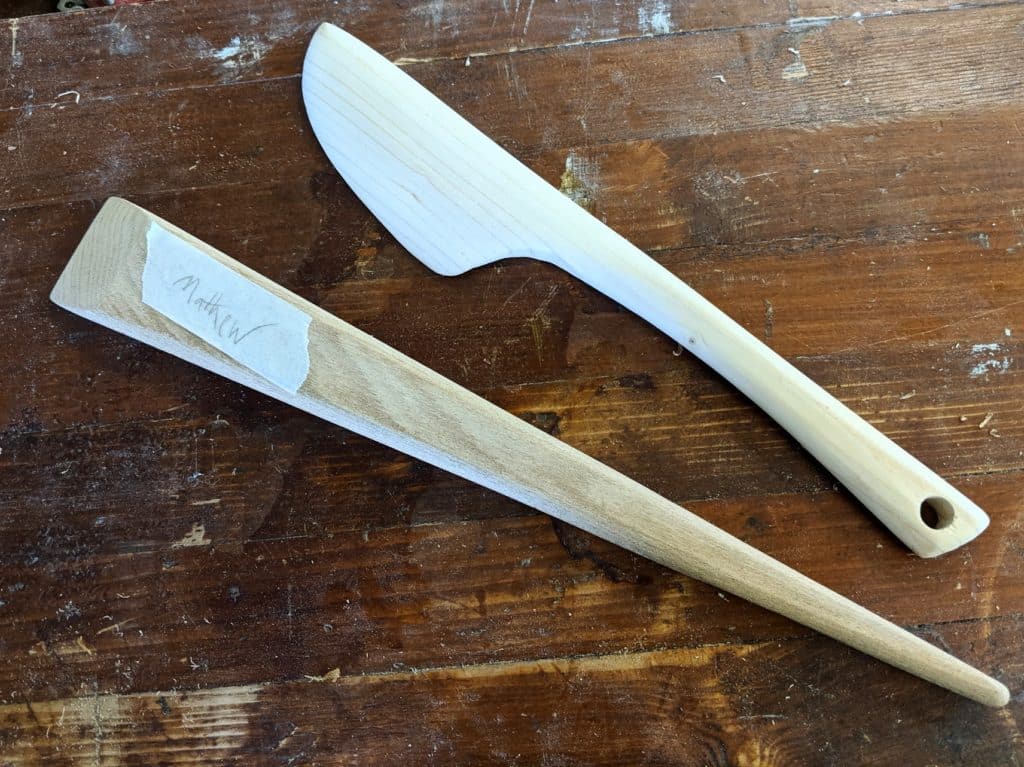
The spatula was one of many items we went on to make this past year. My quest was the challenge to encourage the support workers and teachers that woodworking was as possible for them as it was for anyone else working wood. By them I mean the autists and all those supporting and teaching at the centre. Dismantling some of the thoughts was easy for me because I’ve been doing it for so long. Women work wood as well as men and in my world of 30 years teaching them, this holds no surprises. Gone are the precepts that delineated who could or would work with wood. The therapy of working wood is for everyone.
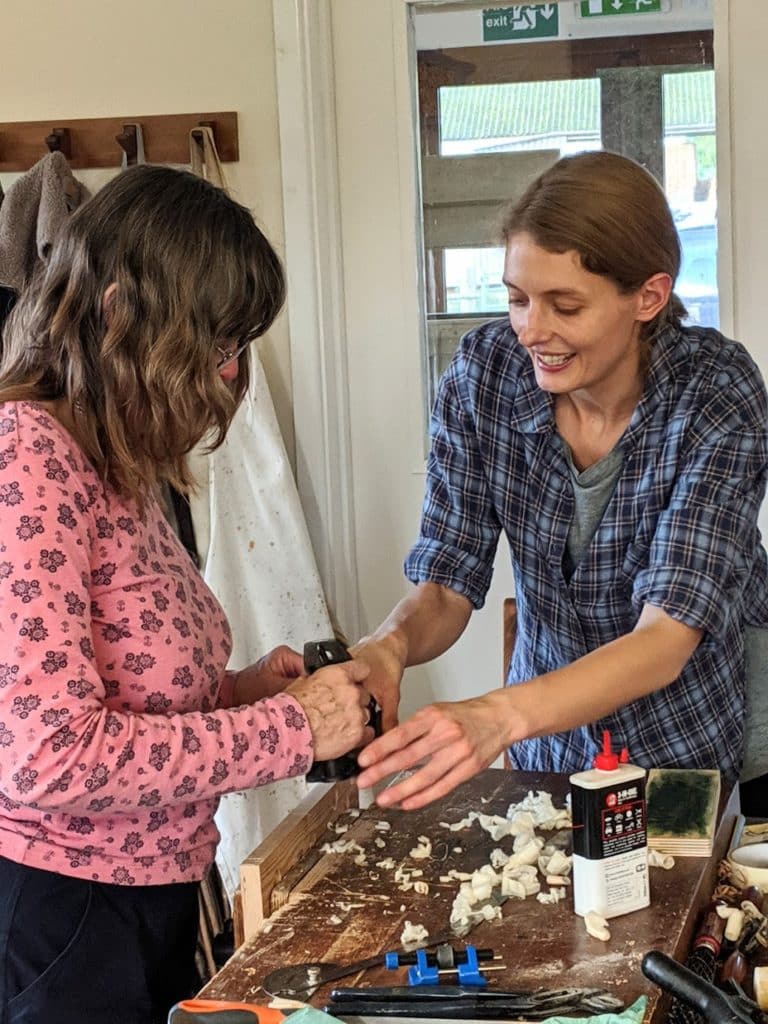
The student-support workers comprise 4-5 women and 2 men. This is indeed a ratio shift as in my class courses through the past three decades the percentages generally have always been less than an average of 5% women attendees at best. In 1990it was less than 1%, 2000 2%. Thankfully societal expectations are changing, even if it is late coming. If there is a hard bit in this it is working with two or three generations who were never encouraged by their parents to work with their hands beyond a basic craft introduction class at secondary level in school. I know parents and adults generally blame the schools, and I have done that a little myself too, but mostly I have seen the demise of woodworking come from parents failing to find out what their children really want to do with their adult life. Hence 72% of the working Brits go to work just to get by and only to pay their bills. For us woodworking the greatest impact on traditional technologies of all kinds like hand work has come over a prolonged period. Machine manufacturers paid the advertising fees and covered the cost of magazine profiting and the the related sales industry that pays the magazines for full-page advertising.

Beyond children not having been introduced to handwork early on in much of life at all it was just a matter fo time before craft life was abandoned in any meaningful part of their lives. But inhibition stops when I show anyone studying woodworking the tools by working them on the wood; it’s here then that the challenges for me stop too. When they see it being done they start to believe that this cant be so hard. When they try it, see the shavings come or the hole appear, they believe.
The elements that need addressing most are the mechanical physics of how, why and what works where when and how. Yes, at first you just need to get their hands on the tools and see them work by their power. It’s often awkward, clumsy if you will, but soon the tools starts to somehow rest in their hands and it becomes natural to the point that they feel so much less awkward in themselves. Turning the swing brace for the first time produces the desired effect. “It’s working and it’s much easier than I thought!”, come the words. Then they truly start to believe
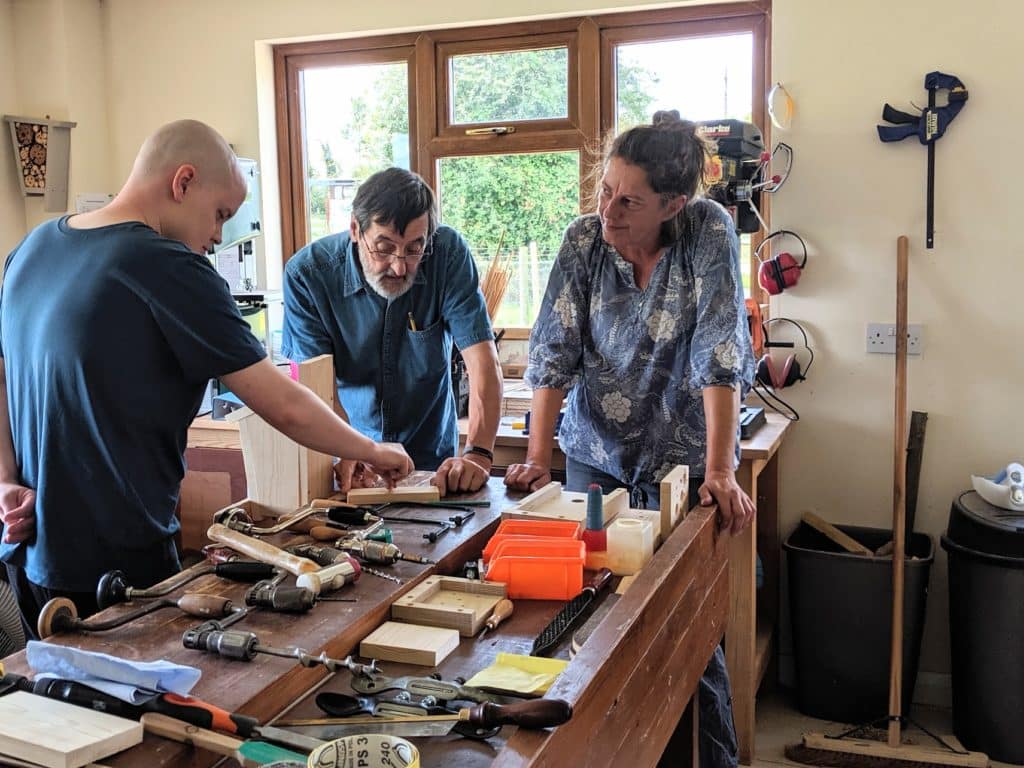
They see the bit turn in perfect accord with their own human speed and strength and then totally within their control. This is those who work daily with their autists and autists too. Thin spirals of wood spill from the auger with each full turn, the senses are heightened, eyes brighten, movements become productive as the curves in the bit emit the waste wood from the hole. This alone is embodies a total sense of empowerment because it’s economic, productive and controlled by their own muscle. But that’s not hard at all, that’s the inspiring part using the right tools that are sharp and correctly adjusted, it’s the sharpening and understanding sharpness that is mostly misunderstood by everyone I ever meet these days.
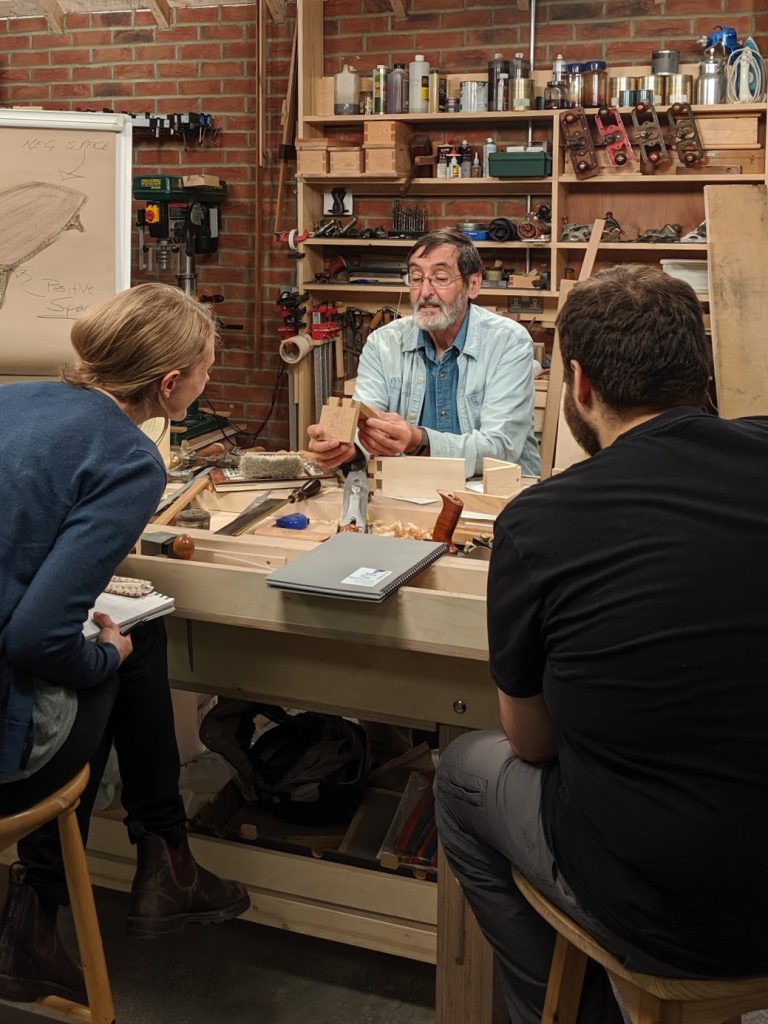
Maintaining pressure, exact angles, understanding threads as in screw threads and such. These are the things that must be understood by the staff first. These things that are mostly left out of the language of young people today are how we equip the new teachers and trainers. With this added into the curriculum it becomes all the more understandable for the teachers. Unfortunately today’s teachers mostly go from infant school to higher education always in school. They are rarely trained for the kind of manual work I speak of. Assuming that young people do not have the vocabulary I use every day it must also be assumed that many of those responsible for teaching practical skills also do not have much understanding beyond their students either.
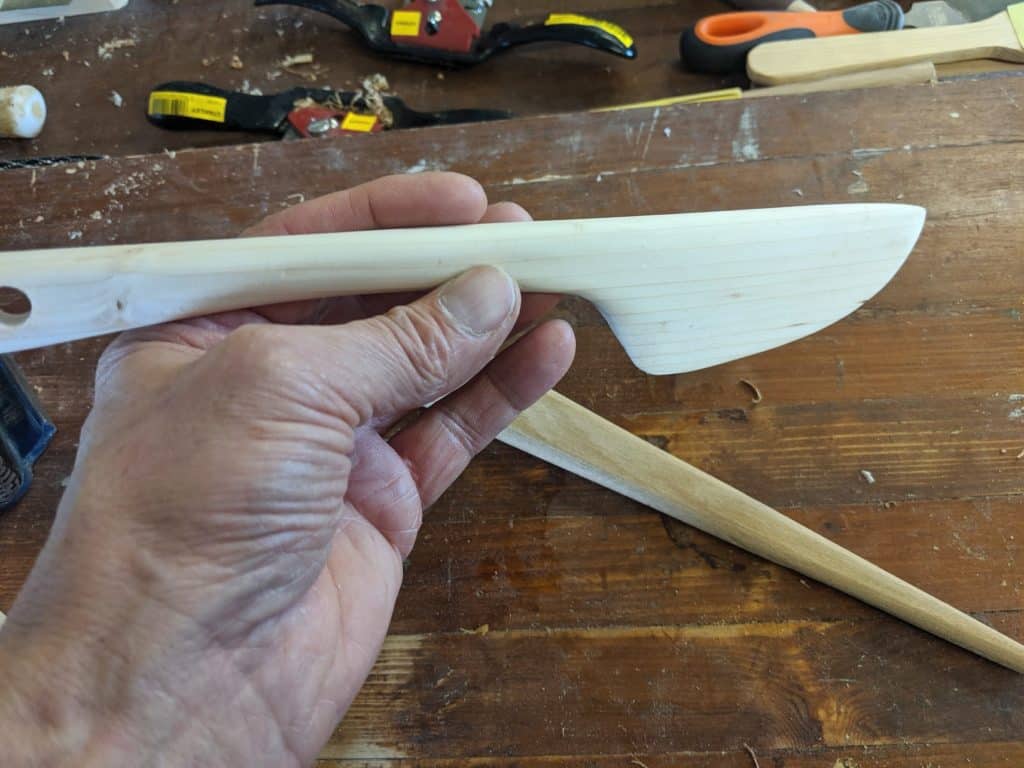
My experience with teachers in school systems is the confidence they have from always relating to littler ones who In the case of the school where we have taken on the responsibility for staff training it was first apparent that the ones closest to the autists would best be the ones to train them according to their individual complexities because of their deep understanding of the autist, autism and subsequent to this, the tools they would now be using. Because of the complex needs of autism as a whole, we recognise that not all autists would be able to use all of the tools and equipment and that must be assessed in the shop and at the benches with support workers present. It’s the staff that carry the hope and desire for the continued expansion of the horizons of their young people with autism. Safety and care for them is always paramount. As one lead staff member has told me often, “We look for any success that comes and then we build on that success to lead them another and then another according to their abilities.” I like that. You see this didn’t start with me, it’s been practiced from the beginning and has become core to what they believe and so foundational to the work there. It becomes readily apparent working with my friends there that they describe where they are, trying to speak for their students (as they cannot) in such a way that others can see and celebrate their strengths as well as understand their difficulties. That’s to show how much application the young people put in to working, despite their difficulties.
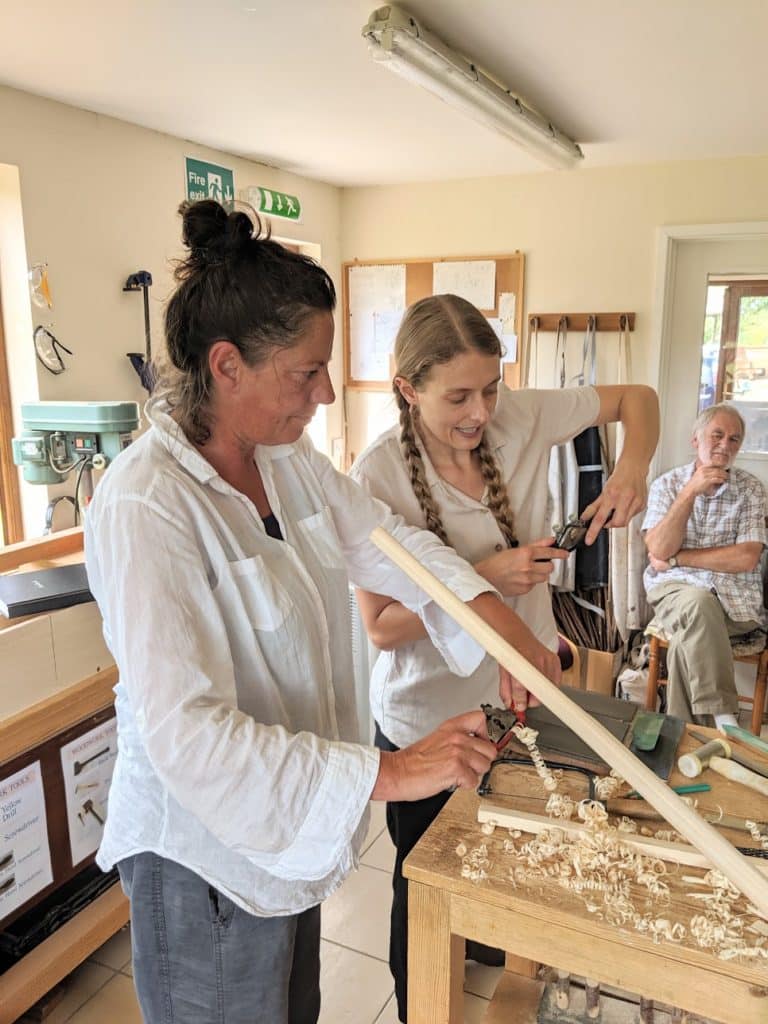
The farmland that contains the training centre is about enabling around 50 young people with autism to gain training within the context of a small and comprehensive farm setting. Here they provide those autists, some with complex needs, the training they need together with real work opportunities in rural based skills such as animal husbandry, horticulture, conservation, home skills, rural craft & hand tool woodworking.
The staff? Well, what can I say? The staff are just the most amazing people. As I said, they carry the burden to expand the horizons of the autists they work with safely and carefully. Without exception they have all embraced the woodworking with a growing interest for how it works for autists and they have done that because they care so much.


Hi paul.
I really appreciate the time you take to write your blog. I really enjoy reading all your blogs. I hope you are in good health and in good spirits.
Richard
I am indeed and thank you for asking. I love this time of year because it seems always to be full of thankfulness.
I have suspected for a number of years that the ‘rise’ of autism/spectrum issues is just as much about the rise of urbanism. The work of husbandry, understanding animals, small holding agriculture, seasons not schedules and working crafts like wood fit well with these folks. For many it seems the ‘problems’ are with the needs of scheduled city life and not them. Great work. Thanks.
Paul, With your experience I’m sure you can tell the species of a piece of wood by sight. Do you have any recommendations of literature, or anything else to help others learn wood identification by sight?
Paul I find it wonderful that you are expanding your teaching to encourage those with autism to work with hand wood tools. Back in 1987 I worked as the head supervisor in the woodwork department, Wellington branch, of the Rehabilitation League in NZ until it closed (restructured) in 1989. I found this one of the most fulfilling and enjoyable work I ever had. A job I actually felt wasn’t “work” for me.
Even though the “clients” in the workshop were generally of better ability than in other departments of the league, the need to have “eyes in the back of my, and my assistants head” was always present; with the work predominantly being by machine. Making jigs so items could safely be produced by unskilled hands was one of the biggest challenges of the job. While there was hand work, this was usually restricted to sanding and assembly. If I had been more aware of the benefits the use hand tools offer, I would have encouraged greater use of them at the time.
Your comments about how women are far more involved in woodwork now, reminds me of my friend Gayle. About five years ago she chucked in her Café work to shelf-build her “Princess Tower”, a 3×3 meter art studio and for living. She’s now self employed doing renovations and enjoying it. And not complaining (so much) about how sore her “little girl” mussels are.
While both of these comments don’t directly relate to hand woodwork as such, I feel they do demonstrate how fulfilling woodworking with your hands and building something is to us all, even by machine.
Since I’ve been watching your channel I think I’ve realised how sharpness is critical in making woodworking a rewarding pursuit and not the drudgery we suffered at school. Who would have thought it ?
Like many of my generation in the late 60’s I dropped out of woodworking class as soon as possible, it was just a physical struggle with what I realise now was poorly maintained and blunt equipment. The whole thing was in steep decline. The emphasis was on science and technology and I, with many others, went down the degree route. No regrets, it gave me most of what I wanted – choices, a good career well paid and a pension. We were fortunate to have lived through that era.
With woodworking what was lacking was enthusiasm and detailed instruction – there just wasn’t any. Not entirely the fault of the teacher in our case, he was a skilled craftsman who just wasn’t supported and a group of students who didn’t want to be there. We knew him socially, he said schools did it because it was still on the curriculum but that everyone knew there was no future (and definitely no funding) in woodworking. I can remember him saying the 1 cu ft allowance of wood per student per year was the beginning of the end (it sounds rather more than you would get now).
He was disillusioned and expected to be out of a job (he soon was), it saddened him that children with little academic but huge skill potential were being wasted.
Further proof that school itself can be come the “blunt” instrument if almost all the educationalists engaged have little if any concept of the importance of art and craft. Even the TV and radio programs presenting hand made efforts are as ineffectively dull and boring. It’s up to use to engage our families and friends and the public too wherever we can.
I always smile when I see your blog post in my email inbox. I always without fail feel better after reading. I’m always inspired.
Thanks Paul
Dear Paul,
I really enjoyed reading this blog, as I do all your blogs, as well as watching your videos.
My brothers watch me woodworking (not very well, but I’m learning thanks to you) and I struggle to convey to them just how rewarding, fulfilling and joyful it can be.
This time last year I had no experience in woodworking and always thought it was something you needed a big workshop and expensive machinery for. That’s all changed thanks to you.
What do you recommend I can do to get them – and anyone else – involved?
Get a 1 1/2″ square stick 2 feet long and have them spokeshave it round in the vise. That’ll grab anyone.
How do I send a photo of my Paul Sellers winding sticks for your viewing?
You can’t do it here but on woodworkingmasterclasses you can post to our gallery there.
Bless you Paul Sellers. You seems to be content. What more can one ask for. Greetings from a hellish hot South Africa.
“The best thing for being sad,” replied Merlin, beginning to puff and blow, “is to learn something. That’s the only thing that never fails. You may grow old and trembling in your anatomies, you may lie awake at night listening to the disorder of your veins, you may miss your only love, you may see the world about you devastated by evil lunatics, or know your honor trampled in the sewers of baser minds. There is only one thing for it then — to learn. Learn why the world wags and what wags it. That is the only thing which the mind can never exhaust, never alienate, never be tortured by, never fear or distrust, and never dream of regretting. Learning is the only thing for you. Look what a lot of things there are to learn.”
Paul, I had thought of the spokeshave but I hadn’t thought of the rasp for safely shaping wood. Thank you for that brilliant idea. I was thinking that the maybe brace and bit might be another tool that some autistics might be able to handle. What is your advice for saws? The coping saw seems to be a little awkward to control. I haven’t made a bowsaw yet, but I was wondering whether you think that a bowsaw or turning saw is appropriate for an autist’s tool kit? A handsaw with smaller teeth seems to work well since it doesn’t require as much strength to get it started in the cut. Thanks for sharing. Richard
Richard, The mental and physical acuity can in no way compare to neurotypicals with regards to predictability. Therefore nothing should be taken for granted. My working with some autists proves that manual dexterity and fine motor movements, neurological ability far exceeds what I have experienced with those who are not on the spectrum. The tools you mention are no problem at all. On the other hand sometimes autism couples with or causes or results in a secondary condition in a range for to broad to list. Dyspraxia, ADHD and so on can cause issues but in reality, getting past the initial difficulty can lead to greater levels of control. In my view the coping saw may cause you an issue but don’t assume it will for others or autists. The coping saw is one of the easiest tools to use. We use a brace and bit with the autists and staff with no issues at all in general but be aware that for some autists the hand tools will be enabling or impossible.
I have been a fan/follower/subscriber for approximately 4 years now, and had learned essentially all my woodworking skills from Paul. Previous to that, I had dabbled with machines but was never able to get the results I was after, and struggled with the preciseness I was able to achieve with Paul’s methods.
As a father of two boys with autism, woodworking for me was a way to relax and regain some calm in a sometimes chaotic and stressful life. Now that they are getting a bit older, (9 and 10), I have started thinking about ways to get them into the shop with me. They are starting to express some interest in my woodworking, and I have got them their own little beech mallets, and they enjoy using them with dowels and holes I have drilled for them. Next I think will be the spokeshave as Paul suggests.
Thank you so much to the whole team for your videos, blogs and master classes. You have no idea what calm and sense of accomplishment you have brought to my life, and in turn what it will bring to my two wonderful boys.
This makes me so happy to hear. The important thing is not to make autists comply to being like us but to give them exposure to new and exciting possibilities; possibilities they will most likely never find in public or even special needs schools. The unifying elements of the two world differences is that the tools and the wood we use generally govern how we work them with the wood. The wood itself pretty much tells us how to work it. Imagine, the tools we use to work wood (and machines are not tools, no matter how you slice it) have remained the same for over 300 years. No new hand tool for woodworking has been invented in that time, only variations on the existing theme.
I have often said that for some autists the shaving from the throat of a spokeshave is the final product. That may never change and or it could. It may well not matter and so too it could. Mostly we do not nor will know. Patience and kindness are two key ingredients and then understanding that our autists are far more unique than we who have been trained to jump through all of the societal hoops and that is mostly to be conformed to a standardising of educational and societal compliance. In most cases autists do not bend and yield to the pressures we neurotypicals do and often we really mostly comply to be accepted by our peers.
Thank you so much, Paul. I was very excited and touched when I read this blog about you working with autism. Here in Canada we are mostly very lucky with the services available, and I think you are bang on with your perception of ASD.
I have found so much more joy and accomplishment in using (and restoring) hand tools, more so than I ever did with machines. The masterclasses are excellent, and I learned two more methods just today!
Thank you Stuart. Thankfully the abbreviation here is mostly changed or in the process of changing from ASD to ASC. Instead of it being a disorder it is now acknowledged as a condition. Much, much clearer and definitive in my view.
Agreed – perhaps something we should look at here. Thanks again!